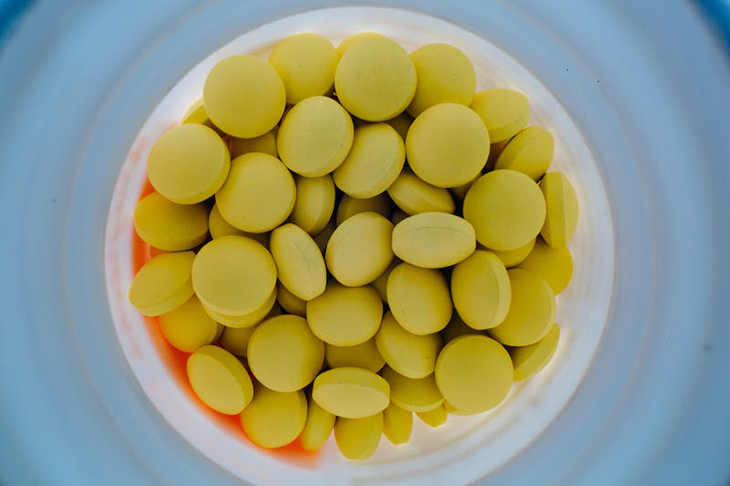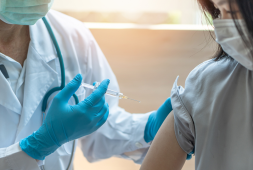
Acne tends to be at its worst when people are in their teens or early twenties, however, it is also a common skin condition that affects adults as well. Surprisingly, up to one in three women in their thirties deals with facial acknew, while approximately one in seven continue to face this challenge even well into their 50s.
When topical medications don’t work or if the acne is causing scars to appear, many experts recommend their patients consider systemic therapies. However, that also means that they’ll probably have to use antibiotics, which at times, can be less than ideal for patients.
According to the clinical director of the Mohs and Dermatologic Surgery Center at Brigham and Women’s Hospital and a dermatologist at Mass General Brigham, both in Boston, Abigail Waldman, MD, “Not only is antibiotic resistance a problem, but antibiotics can affect the gut microbiome with unwanted consequences.”
Notably, Dr. Waldman was not involved in this study.
For women dealing with specific types of acne, one alternative exists in the form of an affordable drug primarily used to manage high blood pressure called spironolactone. Although it is used “off-label” for treating acne, this drug has demonstrated effectiveness in blocking certain hormones responsible for acne development. It’s worth noting that spironolactone is not prescribed to men due to associated side effects, such as the development of breast tissue, explains the American Academy of Dermatology.
Biggest Randomized Controlled Trial Looking at Spironolactone for Acne Treatment
The very first large-scale clinical trial, which looked at the effectiveness of spironolactone in acne treatment, was published on May 16 in the British Medical Journal. The results show a favorable outcome for the inexpensive and generic drug.
“Spironolactone has been gaining popularity [as a treatment for acne], and I think this randomized controlled trial with over 400 participants will help. The previous randomized controlled trials were with fewer than 40 women,” says Dr. Waldman.
Associate professor of dermatology at Wake Forest University School of Medicine and a dermatologist at Atrium Health Wake Forest Baptist, both in Winston-Salem, North Carolina, Lindsay Strowd, MD, shared, “Because spironolactone has been generic for many years, there is less financial incentive to conduct large, multicenter placebo-controlled trials in acne patients.” Dr. Strowd was not involved in the new research either.
Women Saw Significant Improvements After 3 Months of Acne Treatment
The study, which was conducted in the UK, involved 410 women over the age of 18, and with an average age of 29, all of whom had been struggling with acne for over six months. For these women, oral antibiotics would typically have been the next course of treatment. Half of the participants were randomly assigned to take spironolactone, while the other half were given a placebo.
During the first six weeks, the spironolactone group was given 50 milligrams (mg) daily, then eventually, the dosage was increased to 100 mg per day until week 24.
Throughout the trial, the women provided feedback via completed questionnaires on their acne and the impact on their quality of life, first at the beginning of the trial, then at 12 and 24 weeks into the treatment.
Lead author of the study, Miriam Santer, PhD, a professor of primary care research at the University of Southampton in England, said in a press release, “The results showed that the women taking spironolactone saw a significant improvement in their acne after 12 and 24 weeks compared to those on the placebo.”
Spironolactone Could Be an Alternative to Antibiotic Use for Many Women
“A significantly higher proportion of people also reported that they felt satisfied that their skin had been helped compared with those receiving placebo, and any side effects were uncommon and very minor. These results show that spironolactone could offer an alternative to antibiotics for many women with persistent acne to use alongside topical acne treatments,” said Dr Santer.
Dr. Waldman shared, “The findings also showed a significant objective reduction in acne at 24 weeks. This was a well-designed study, and I think it was reassuring that few side effects were noted, with headache being higher in the treatment group.”
“One important finding from this study that I discuss with my patients is the relative slowness of the acne to respond to spironolactone. It can often take three to five months to see the full effect of the medication, and more rapid improvement can be seen by pairing the medication with a topical acne agent such as a topical retinoid,” says Dr. Strowd.
Which Acne Type Responds to Spironolactone?
Dr. Waldman also explained that ‘spironolactone is used for a very specific type of acne caused by hormonal imbalance in women. “This acne presents on the jawline, neck, and chest,” she says.
Dr. Waldman also shares that usually, spironolactone is usually considered a second or third-line treatment after topical medications such as benzoyl peroxide, topical retinoids, and oral antibiotics. “Often it is prescribed with an oral contraceptive, which increases its potency and prevents pregnancy complications while on the medication,” she says.
She also points out that spironolactone should not be used during pregnancy, or if you happen to be trying to conceive, due to its effect on one’s hormones. Women usually are asked to take contraceptives while using it, she says.
Antibiotic Resistance Is One of the Biggest Threat to Global Health
In the United States, spironolactone has gained popularity as dermatologists become increasingly aware of antibiotic resistance concerns. The medical community is striving to minimize prolonged reliance on oral antibiotics for acne treatment, says Dr. Strowd.
Antibiotic resistance poses a significant global health threat, as these drugs lose their effectiveness against bacteria and fungi. This alarming trend, highlighted by the World Health Organization (WHO), jeopardizes health, food security, and development. While antibiotics are necessary in many healthcare scenarios, it is crucial to use them judiciously to combat antimicrobial resistance effectively.



